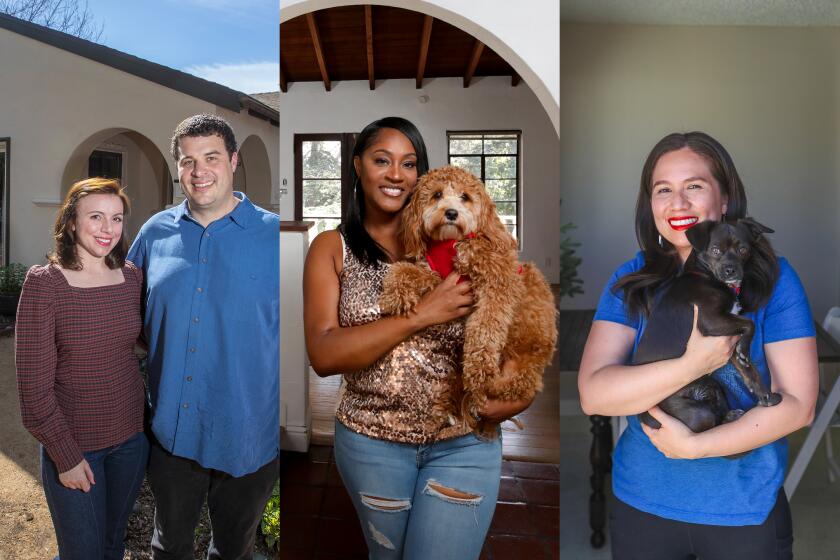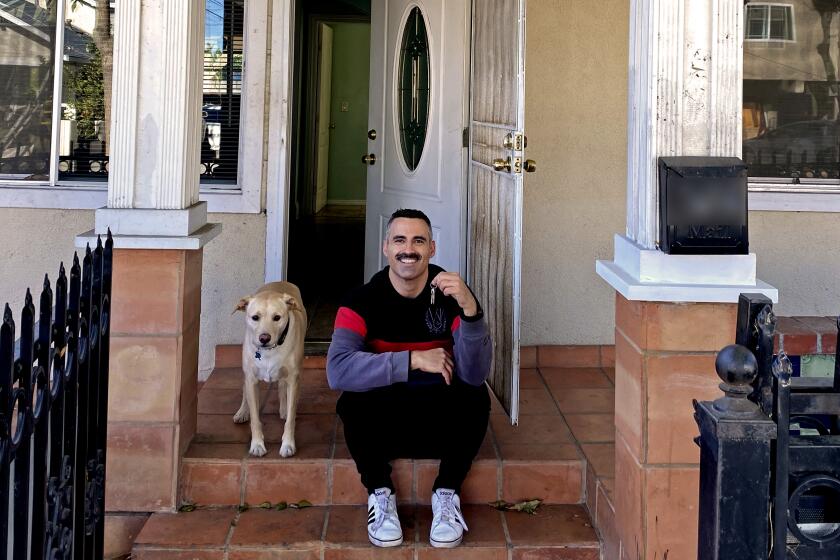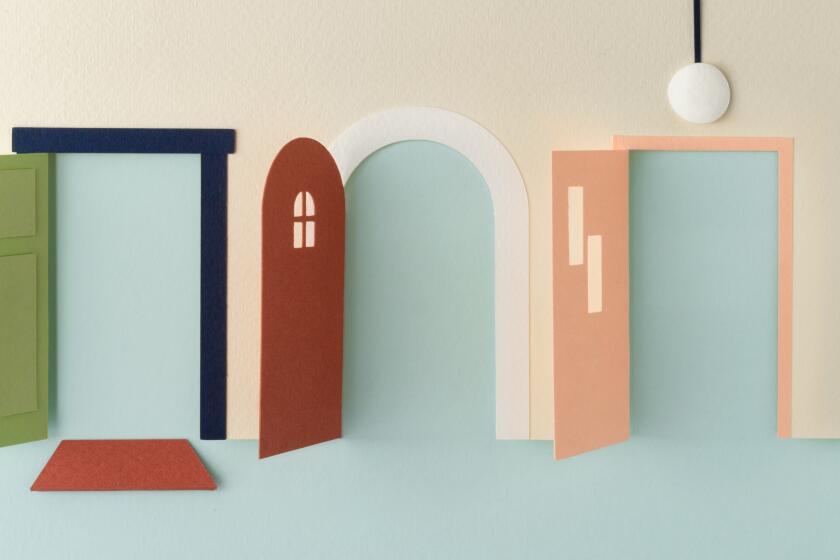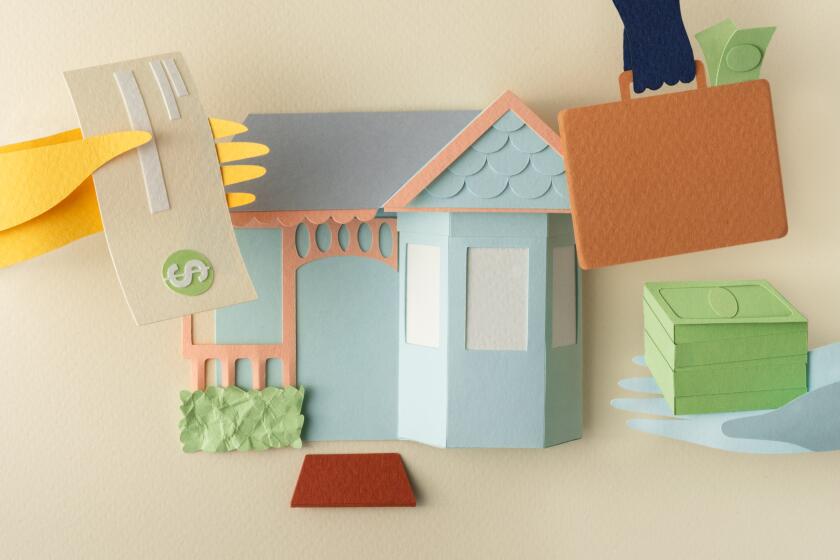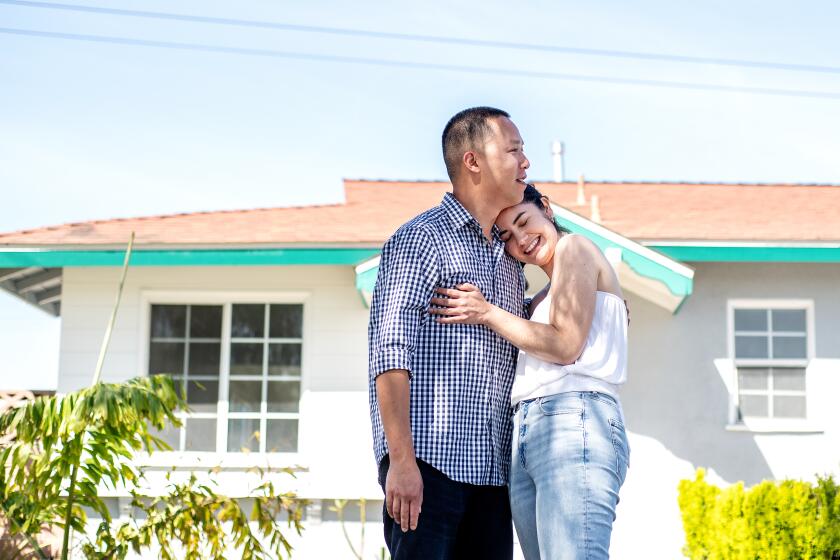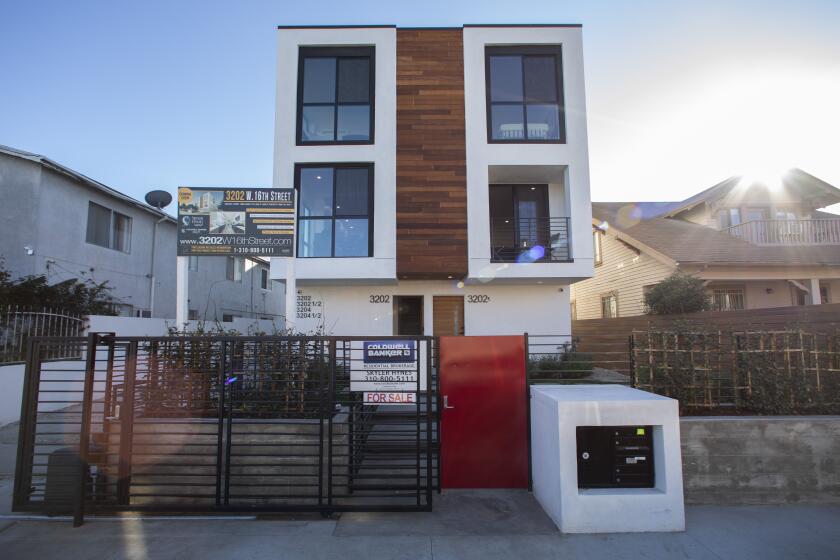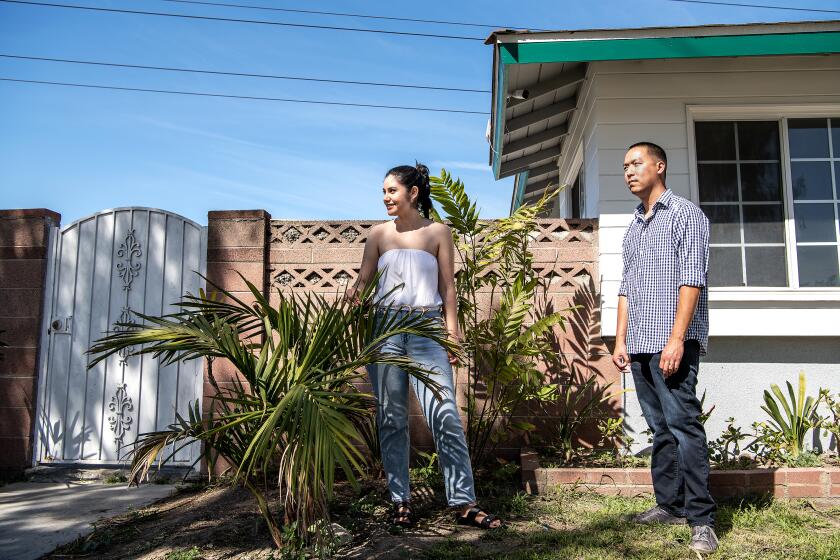Having trouble buying a home? Four alternative ways to succeed in this market
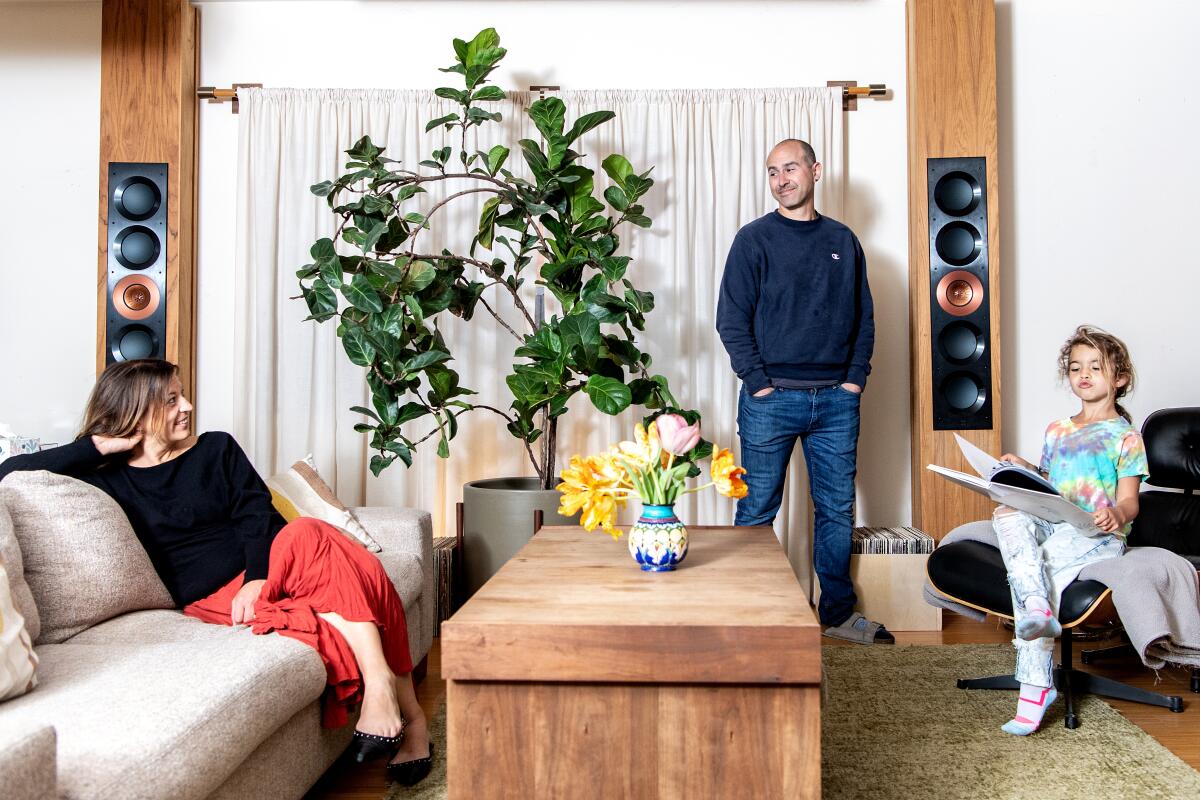
- Share via
Buying your first home in Southern California can seem like a daunting task, especially if you’re not made of money. High on the list of intimidations for first-time home buyers are stratospheric home prices and cutthroat bidding wars.
Clearly, it’s still possible to become a homeowner — people do it every day, even in the land of $950,000 median home listings. It’s just a question of how.
You can spend years accumulating the savings you think you’ll need for a down payment, then spend months searching for a home that strikes you as both desirable and affordable. That’s what typical buyers do.
Or you can take the road less traveled to homeownership.
We asked real estate agents, homeowners and a real estate investor to share their stories of less-conventional first-time home purchases. Here’s what they had to offer.
Five homebuyers tell us how they chose which neighborhood to commit to in Greater Los Angeles — no small feat.
Second choice leads to first
Three years ago, agent Kenya Reeves-Costa began working with a couple, an attorney and a nurse, who wanted to buy a Craftsman-style home.
They searched for a long time but couldn’t find a house that met their needs. So they bought a condo instead.
Three years later, Reeves-Costa said, the nurse learned that her elderly grandfather was moving out of his home and into an assisted-living facility. He offered to sell his home to them directly, without putting it on the market.
It’s a beautifully maintained Craftsman-style home from 1909 that’s in their desired neighborhood — exactly what they wanted. They’re putting their condo on the market to raise $100,000 for the down payment, Reeves-Costa said.
Even though it wasn’t their first choice to purchase a condo, she said, the couple made the right decision because they generated the equity needed for their second purchase.
Southern California home buyers talk about how they made it through — or around — the flurry of ever-higher bids.
“I always tell everybody, buy something, anything. I don’t care what you can get your hands on,” she said.
Then, you wait for your next opportunity. It’s a plan that Reeves-Costa understands is difficult. But the reality is in Los Angeles, it’s almost impossible to purchase your dream home on your first go, she said.
The prices of homes are so high that you have to be open to your second-choice home or neighborhood and something less than a single-family house.
“We’re pitched this Midwest dream of housing affordability, but it’s very hard in Los Angeles, even if you have two incomes,” she said.
Her advice is to make the purchase, pay your mortgage and improve the property. In five to seven years, you’ll be able to move forward to something else that feels more like your first choice. “When you have something in your mind, when you’ve got this vision, it’s interesting how the universe will bring that to you,” she said.
From renter to owner
Jorgie Zimring and her husband spent a decade watching the housing market and saving for a down payment before they started making offers on homes in the Carthay Square area in 2020. But they couldn’t win the bidding wars, losing out on three homes in a row.
Zimring, a lawyer, and her husband, an electrical contractor, were open to homes that needed remodeling, homes sold in trust or probate sales. They didn’t mind a project and believed fixer-uppers would be less attractive to your average buyer. However, they were still being outbid by $200,000 to $300,000.
Meanwhile, the Zimrings had been living in a rented home in Mid-City since 2012. The couple couldn’t afford the place on their own at first, so Zimring’s sister moved in as a roommate for a time to help with the rent.
The rental was in an ideal location for the family, and they approached the landlord several times about their interest in purchasing the home. “We kept asking every few years if she’d be willing to sell,” Zimring said, “and our price points just never matched.”
They maintained a good relationship with their landlord, who didn’t live in Los Angeles, making repairs whenever needed and sending her the bill. But in the last year the entire HVAC system stopped working, and other costly projects started to pop up.
It was the push the landlord needed to make a deal.
The Great SoCal House Hunt
“She came down significantly [with her price], and we got to a place where we realized for the same price point we just couldn’t afford anything as nice or in a location we wanted,” Zimring said. “So we both kind of met in the middle.”
You don’t hear stories like this often, but Realtor James Randolph said landlords do sell their homes to their tenants.
He’s currently working with a client who is purchasing the home he’s been renting. The opportunity came up when the landlord shared his desire to sell the property and wondered if the renter would be interested in purchasing it before it was put on the market.
It’s easier for a landlord when the tenant is the buyer and not just a leaseholder with rights that can complicate a deal.
From the buyer’s perspective, this sort of deal works too because he or she already knows the seller and, if an agreement is made, doesn’t have to worry about being outbid.
If you’re a tenant who’s interested in the property you rent, Randolph advises you to make that interest known. He acknowledged that some renters don’t want their landlord to know they’re interested in becoming homeowners or moving out. So don’t broach this topic if you’re not ready.
What does it really take to buy a house in Southern California? A Long Beach couple share their story, from strategic job moves to Realtor regrets.
To start the conversation, ask if your landlord has considered putting the house on the market. It’s a good way to understand if a landlord has a timeline for selling the property. If the answer is yes, make it known that you would be interested in being a potential buyer.
It takes two (or more)
Cristina Ortega is the owner and operator of Mrs. Property Solutions, which buys homes in the Los Angeles area for cash and renovates them for resale.
Since 2016 she’s worked with a variety of sellers and buyers.
Aside from a couple or business partners purchasing a home together, she doesn’t see a lot of friends taking a leap and buying a home together, but it is doable.
“It just depends on what your long-term plans are,” she said. “Are you going to live in the property, is it going to be a rental property, or are you going to flip it together?”
The shared-ownership model, called tenancy-in-common or TIC, raised uproar in L.A. for displacing renters. Can one developer fix its tainted past?
Ortega said two individuals can purchase a property as tenants in common or as joint tenants. Tenants in common share ownership of the entire property, although each can hold a different percentage of the ownership interest and buy in at different times. Joint tenants divide their shares in the property equally, become owners at the same time and have each of their names on the deed.
These are alternative ways to gather the funds needed for a down payment, share the costs of homeownership and build long-term equity without burning a hole in your pocket.
But Ortega cautioned that you and your partners need to have an exit strategy that you agree on. For example, she said, you can set up a trust with instructions for how to handle the shares of any owner who has to exit the agreement.
It’s also important to set a time frame for how long you’d like to be invested in the property — for example, you agree to sell after seven years.
“Buyer interest” letters are common in ultra-competitive housing markets like California’s, even though they raise questions of discrimination.
This type of purchase can be done for a single-family or multifamily home, whatever works for the buyers. It’s also a way for people to make a first investment and generate equity that they can use to buy their ideal home.
Although it’s a tight market, Ortega said, you don’t want to be waiting on the sidelines for too long. Broaden your search and think about a friend you trust who’s in a similar position.
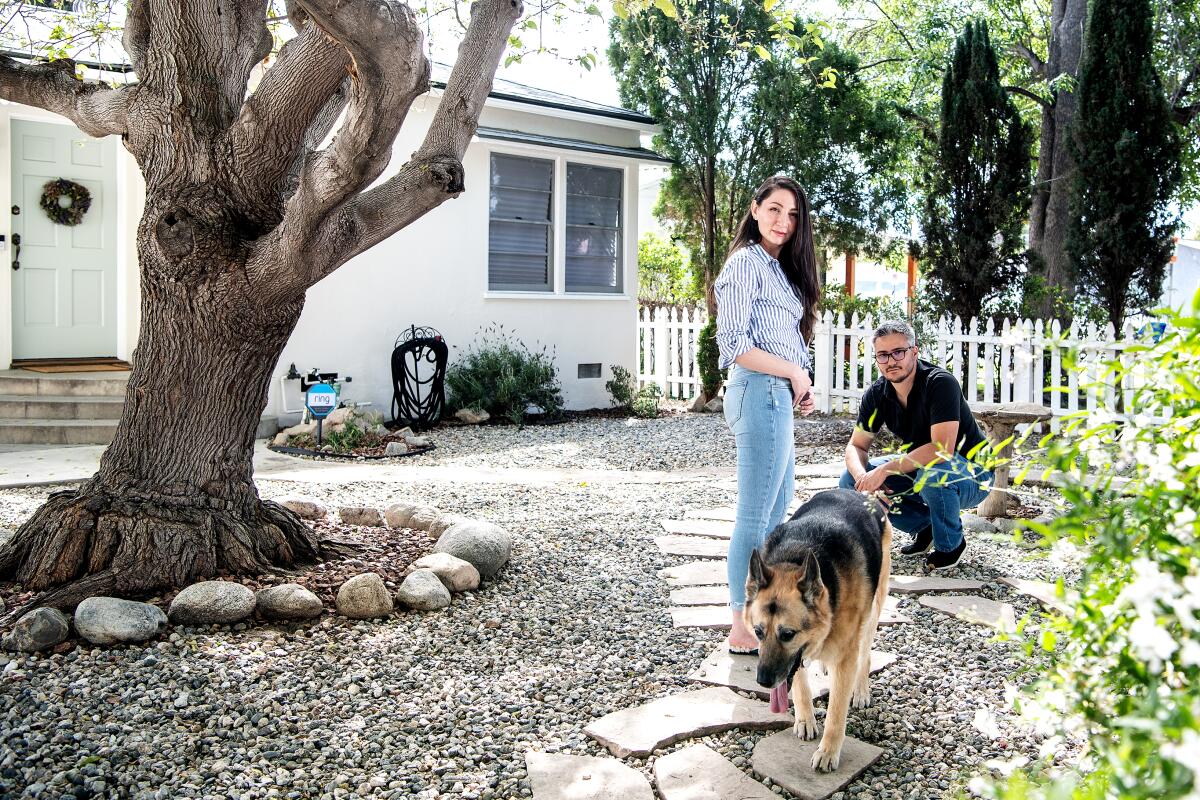
Keeping it in the community
One of the biggest hurdles for buyers is the scrum of bidders that forms as soon as a house hits the market. That’s why it helps to find ways to grab a house before it’s listed by an agent, as Randolph’s client was able to do with his landlord’s house.
Sometimes, that means capitalizing on relationships.
For example, Realtor Derek Hirano recounted how goodwill between neighbors helped trigger the sale of a house by one of his clients. The client had taken over the home from his mother, who had developed a great relationship over the previous 20 years with the neighbors next door.
“They did neighborly things like bringing in the trash can, making sure she had what she needed and checking in,” Hirano said.
Most people don’t buy a home with a 20% down payment. Here’s how you can put down less and get more help with down payment and closing costs.
When the client’s mother died, he was looking to sell the home but didn’t have any timeline or concrete plan for when to put it on the market.
It wasn’t until the client talked with the neighbors that he was moved to sell the property to the adult son who was living with them at the time.
“If you think about it, it saved time and effort. I think both parties walked away happy with the sale,” he said. “The parents are especially happy about it, of course. Their son is now living next door. It’s kind of like an ‘Everybody Loves Raymond’ thing.”
Felicia Dowell grew up on a quaint roundabout street in Van Nuys, in a historical district known for unique homes and a close-knit community. Neighbors borrowed books from one another at the communal library, came together at block parties and went the extra mile to assist whoever was in need.
When she was house hunting years later, Dowell and her husband, Rodney, repeatedly came up just short on several dream homes. In late 2020, however, they had a revelation after visiting friends in Houston and seeing their newly constructed home: three bedrooms and three bathrooms in 2,400 square feet, all for just $450,000.
“We realized we couldn’t get something that new and that big in the San Fernando Valley, or anywhere in Los Angeles, for that price,” said Rodney, 32.
They signed a contract in January 2021 to buy a Houston home still under construction, personalizing the floors, fixtures and other features before moving in last August.
In less than three months, however, their plans were up in the air again after Rodney’s new job required him to return to Los Angeles in 2022.
The Dowells flew back to Felicia’s mother’s home in Van Nuys in November, renting out the Texas home they had just moved into. Two doors down in the Valley, however, their neighbors were in the midst of their own home-related nightmare.
The neighbors wanted to move to Palm Springs and had found a buyer to purchase their house with cash — but the buyer dropped out just before closing. The couple, who were in their 60s, were devastated, so the Dowells came over to cheer them up.
Midway through the conversation, though, the couple made a very big ask.
“We were just enjoying some cake, all together, and they said to us, ‘Would you like to buy our home?’” Felicia said.
The house was smaller than they had envisioned, but after a seven-year search, the idea of staying right in the midst of their beloved neighborhood was too good to pass up. A month after moving back to Van Nuys, they bought the house for $800,000, and they started the move-in process in February.
“We literally went 1,500 miles away to Texas, to come within 50 feet of my mom’s house,” Felicia said.
Step-by-Step Guide
More to Read
Sign up for Essential California
The most important California stories and recommendations in your inbox every morning.
You may occasionally receive promotional content from the Los Angeles Times.
